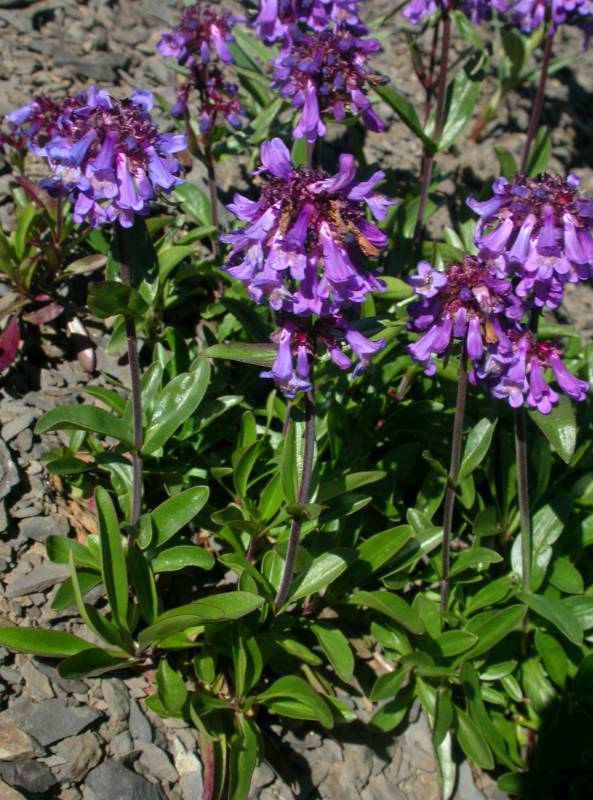Penstemon ovatus
Penstemon procerus
egg-leaf beardtongue, broad-leaved penstemon
small-flowered penstemon
Basal leaves opposite, clustered, petiolate, with ovate to sub-cordate blade up to 10 cm. long and half as wide, about equaling the petiole, serrate, hairy like the stem, especially along the mid-vein beneath;
cauline leaves sessile and clasping, more sharply serrate, nearly as large, but more broadly oblong, the upper ovate.
Leaves opposite, entire, the basal ones petiolate, oblanceolate to elliptic, up to 10 cm. long and 1.5 cm. wide, often poorly developed;
cauline leaves few, mostly sessile, often much smaller that the basal leaves.
Inflorescence large and open, strongly glandular-hairy;
calyx 3-5 mm. long, broadly lanceolate, with parallel veins;
corolla blue, 15-22 mm. long, glandular-hairy on the outside, the raised portion of the lower petal pale blue and hairy;
corolla strongly bilabiate, the lower lip much the longer;
pollen sacs 0.8-1.1 mm. long, fully dehiscent and becoming opposite, nearly glabrous;
staminode bearded toward the recurved tip.
Inflorescence of 1-several, very dense verticillasters, the flowers curved downward;
calyx 1.5-6 mm. long, the 5 segments truncate to acute, the margins scarious;
corolla deep blue-purple, 6-11 mm. long, the tube narrow, 2-3 mm. wide at the mouth, not strongly bilabiate, the raised part of the lower lip bearded;
staminode usually bearded, sometimes glabrous;
pollen sacs glabrous, sub-rotund, wholly dehiscent and opening wide enough to form a plane.
Capsule 4-6 mm. long.
Capsules 5-8 mm. long and seeds approximately 1 mm. in length.
Penstemon ovatus
Penstemon procerus
- Local floras:
BC,
CA,
OR,
WA
- Local Web sites:
CalFlora,
CalPhotos,
Flora NW,
PNW Herbaria,
Turner Photog.
WildflowerSearch
iNaturalist (observations)
USDA Plants Database
- LBJ Wildflower Center
- SEINet
- Plants of the World Online
- Encyclopedia of Life
- Wikipedia
- Google Image Search



